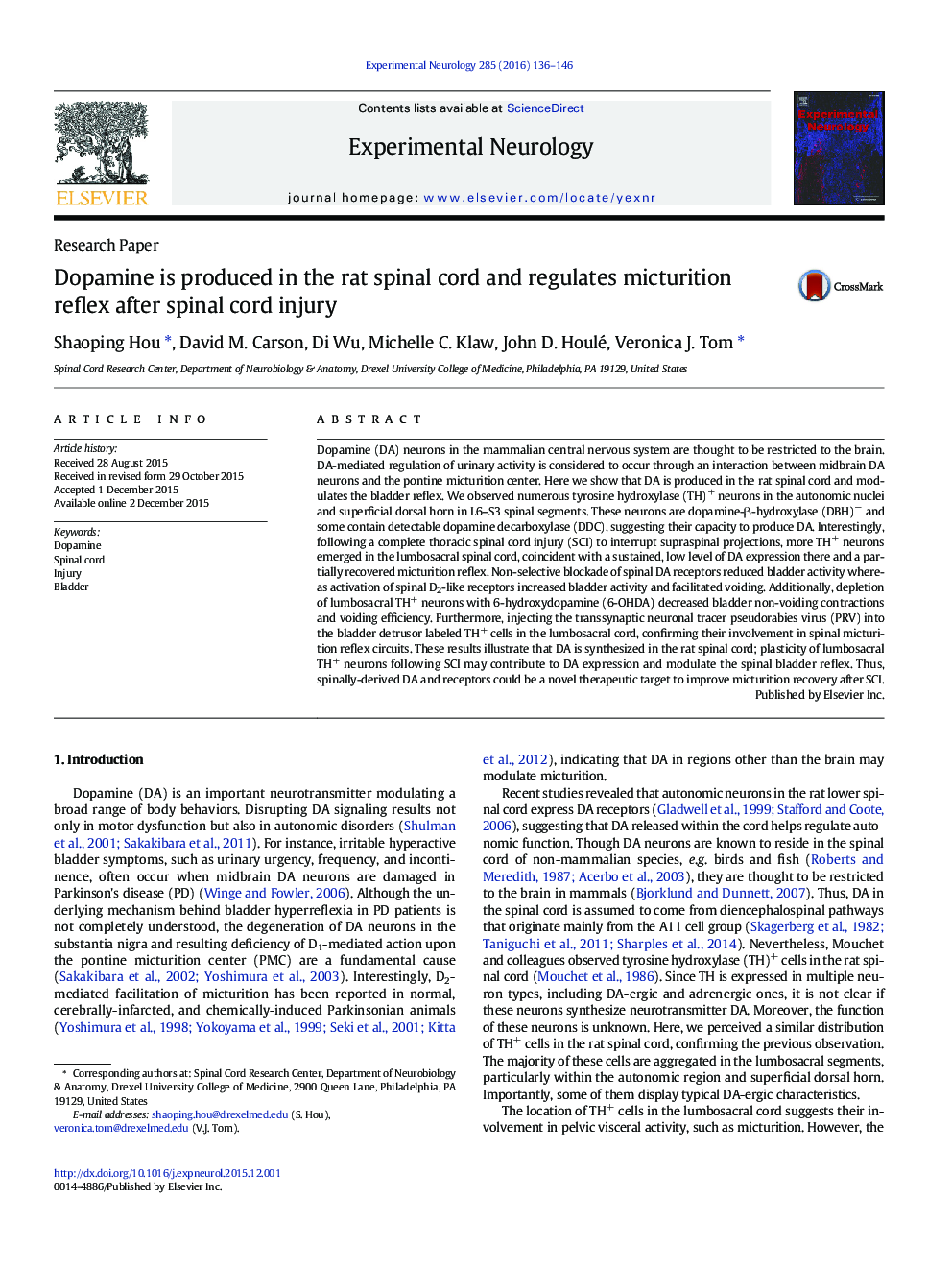| کد مقاله | کد نشریه | سال انتشار | مقاله انگلیسی | نسخه تمام متن |
|---|---|---|---|---|
| 5629239 | 1406406 | 2016 | 11 صفحه PDF | دانلود رایگان |
- Dopamine (DA) neurons reside in the rat spinal cord and constitute a local, spinal source of DA.
- Spinal DA-ergic mechanisms regulate micturition reflex following spinal cord injury.
- Stimulating spinal D2-like receptors facilitates urinary voiding in spinal cord-injured rats.
Dopamine (DA) neurons in the mammalian central nervous system are thought to be restricted to the brain. DA-mediated regulation of urinary activity is considered to occur through an interaction between midbrain DA neurons and the pontine micturition center. Here we show that DA is produced in the rat spinal cord and modulates the bladder reflex. We observed numerous tyrosine hydroxylase (TH)+ neurons in the autonomic nuclei and superficial dorsal horn in L6-S3 spinal segments. These neurons are dopamine-β-hydroxylase (DBH)â and some contain detectable dopamine decarboxylase (DDC), suggesting their capacity to produce DA. Interestingly, following a complete thoracic spinal cord injury (SCI) to interrupt supraspinal projections, more TH+ neurons emerged in the lumbosacral spinal cord, coincident with a sustained, low level of DA expression there and a partially recovered micturition reflex. Non-selective blockade of spinal DA receptors reduced bladder activity whereas activation of spinal D2-like receptors increased bladder activity and facilitated voiding. Additionally, depletion of lumbosacral TH+ neurons with 6-hydroxydopamine (6-OHDA) decreased bladder non-voiding contractions and voiding efficiency. Furthermore, injecting the transsynaptic neuronal tracer pseudorabies virus (PRV) into the bladder detrusor labeled TH+ cells in the lumbosacral cord, confirming their involvement in spinal micturition reflex circuits. These results illustrate that DA is synthesized in the rat spinal cord; plasticity of lumbosacral TH+ neurons following SCI may contribute to DA expression and modulate the spinal bladder reflex. Thus, spinally-derived DA and receptors could be a novel therapeutic target to improve micturition recovery after SCI.
Journal: Experimental Neurology - Volume 285, Part B, November 2016, Pages 136-146
